Beaucoup de Belgians
a contemporary survey on the increasingly ubiquitous Belgian-style loafers
I’ve noticed a Belgian sprawl within the menswear community’s footwear market. No, not brands or makers from Belgium, but Belgian-Style loafers - strongly reminiscent of the shoes produced by the Belgian Shoes boutique and brand founded by Mr. Henri Bendel in 1955, pictured above in a surrealist portrait with a Dali-esque Belgian Shoe affixed on his head like a hat. Belgian Shoes, which are indeed made in Belgium, feature a low, almond-shaped vamp stitched to a mostly unstructured or lightly structured upper with low walls.
Per the Belgian Shoe website, the the iconic and dainty footwear has been around in Belgium for over 300 years. Since their founding in 1955, Belgian Shoes has been an Upper East Side staple with a cult following. As with most classic items taken for granted, the loafers continued existing decade after decade within the social current of NYC on the feet of socialites and fashion mavens.
These little loafers gained a new popularity in the early 2010’s after the rise of social media and a new generation discovered “classic menswear”, ushering a newfound interest and passion for tailored clothing and traditionally made shoes. Belgian Shoes once again took center stage as the perfect louche loafer that could be dressed up or down. Nearly 15 years later, here we are, and the Belgian Shoes continue to live on through a whole gamut of customers ranging from the most traditional, older generations to new, younger generations aware of craft, heritage, and timeless style.
Funny enough, shortly before the publication of this post, the digital journal AIR MAIL published Emilie Hawton’s article The Belgian Shoes Boom providing a perfect prologue to this post, delving into the “Belgians’ effect” in a post-sneaker world.
Others have provided historical analyses of Belgian shoes in some of the following periodicals and newsletters you may know and love:
Provenance and artistry from the maker’s mouth, on the Belgian Shoes website.
A 2016 GQ piece by Samuel Hine on the Belgian Shoes as the footwear of choice amongst certain NYC designers.
An ode to Belgian Shoes and loafers by David Coggins in his Belgian Diaries.
A Derive on Belgian Loafer Heritage & Style by Anthony W. Madsen Sylvester.
Alan Flusser on his love for Belgian loafers.
I, myself, have never owned nor worn a pair of Belgian Shoes, but have several Belgian style loafers. The problem with Belgian Shoes, if there ever was a first-world problem, is that they’re now $700 and higher. Funny, especially in comparison to David Coggins’s contempt to the price in his 2020 post:
“The shoes were expensive then and they’re even more now (an ice cold $490, which is really tough to take).”
Which is why I’m here. Not to slander those making Belgian dupes (on the contrary, many of them have only improved on the design and construction of the subtle silhouette) but to make aware the plethora of options that are now available due to their popularity, even if they are not what one would call mainstream.
Let this be a contemporary survey on the increasingly ubiquitous Belgian loafers. Who’s making these Belgian loafers and where, if not in Belgium?
~ THE BELGIAN LOAFERS ~
(15 total brands listed in alphabetical order for your consideration)
This is THE contemporary Belgian loafer with a classic appeal. Heralded on high by Permanent Style and the royal menswear court of Pitti as the proper alternative to Belgian Shoes, Badouin & Lange has gained praise and a cult-like following if there ever was one. Simon Crompton first reported on the Sagan, their initial release, back in 2016. He waxes poetic on the supple materials and top quality. Since then, B&L have expanded to more loafers, trainers, boots, and mules while keeping a cohesive aesthetic. I thought they are made in England as they mention on their site “operating out of London” and “luxury shoes and boots carefully handmade in our ateliers,” but actually made in Italy, apparently.
Ranging around $400 and up with a range of leathers, suedes, and exotic skins, these may be the Belgian loafers with the best value out there given the quality of their options and customer service, based on friends who have had the pleasure of owning a pair. I have not tried these on yet, but do hope to one day and treat myself, as they say these days.
Berwick 1707 is a small, Spanish shoe brand that seems to sell their shoes mostly from a few online retailers from the UK, Europe, Canada, and Asia. I’ve purchased several pairs from the UK based online shop A Fine Pair of Shoes for quick and reliable service. I love these, they’re actually my go-tos - a classic last and shape, just a little small, so I suggest sizing up one whole size. Break in is minimal. I have 4 pairs that I use for various occasions: dark brown deerskin with and without tassels, and dark brown suede with and without tassels. I wear them all with and without socks, depending on the weather. Never with no-show socks, that’s just a no-no.
As they are made in Spain I’m pretty sure they’re made by the same makers as Yanko, given what seems to be a style number printed on the interior liner, 4951 with tassels and 4950 without. I have a sneaking suspicion that another shoe brand I’m featuring here, Morjas, also uses the same (unknown) Spanish maker for for their Belgian loafers. That being said, these loafers are a great value given their price right around $200 along with their different suede and leather options, and durable leather/rubber hybrid Blake-stitched sole.
I would almost not call these a Belgian loafer, maybe more of a Venetian loafer as the top apron is rather long. Not very appealing, especially with the odd upward slope at the front of the shoe.
I have not tried these, nor want to. On their site, Beckett Simonon states their Vincent Belgian Loafer has “a steel shank is riveted to the insole and outsole for added balance and support” and “Blake stitching ensures the shoes are sturdy and resoleable with minimal break-in”. A steel shank is usually reserved for goodyear welted shoes, hard bottoms if you will, and are at odds with what a Belgian loafer should be - do shoes with Blake stitching usually have a steel shank? Some can, it seems. But that would only make it heavier and more rigid, rather than light and comfortable.
My last reservation about these, aside from their direct-to-consumer marketing with what they advertise as unbeatable, made-to-order pricing, is my experience with some of their $100 slippers I purchased a couple years ago which fell apart after a season of in-home winter wear. They are listed at $219 and state they should be $350 by traditional retail standards on their site, before you are bombarded by discount popups. No thanks.
Bomberos is giving more DTC, but seem to offer more than the Beckett Simonon Vincent Belgian Loafer. Most of their shoes on the site are sold out, however, and it seems that the site has not been updated in a bit, are they still in operation?
I have neither tried these. They seem fine but their toe-box looks a bit high, making it a little chunky, but they’re construction seems fine. They are also made in Spain, but probably from a different shoe maker than Berwick and Yanko (and Morjas) based on the style and construction. If I had to choose I’d probably go with the Santander Gran in Brown Calfksin, pictured above.
A few things about these loafers, however, turn me off. One is the brand name, Bomberos, which means firefighters in Spanish. They are made in Spain, but I don’t think you fight fires in Belgians, as far as I know. Second is their combinations of leather and suede, bow and no bow, and contrast stitching. They could be a little more subtle and nuanced rather than fancy and dandy, but that’s my own preference. Then again, we are talking about an overall fancy and dandy type of footwear. I wouldn’t buy these as I don’t see the value for being over $250, but I wouldn’t refuse them if they were a gift.
The Crown Northampton Brockton Belgian is a wonderful rendition of the Belgian style. I love these and I know I do because I have a pair. The Crown Northampton Brockton Belgian was my first Belgian loafer purchase from back in 2020, they’ve been used and abused and are comfortably loose.
Unfortunatley, they no longer stock them with the heel, leather sole. (I have not tried Badouin & Lange in person, but having seen some friends of mine with B&L my Crown’s seem right up to par with them, albeit, even less structured than the B&L’s)
Their new Belgian, the Artizan Belgian Slipper, is even more of a slipper than ever before featuring a cushioning Vibram rubber sole (their Brockton was labeled as a slipper, but had a leather sole with some rubber to stroll in). For less than $300 these may be the second best value for those in search of a quality made and well designed Belgian-style loafer.
Something about the last or silhouette of Del Toro’s Milano loafer does not appeal to me, I can’t put my finger on it. They look fine, but I do not care for the “non-bow” apron stitch. Add it or don’t.
In fact, I do not care for the bow at all on the traditional Belgian Shoes, but I don’t mind some tassels. Tassels seem a bit more intentional, whereas the tiny little bow sits their rigidly, as if glued down rather than a part of the shoe. This may go against the purists’ approach to the Belgian Shoe ethos, as described in Samuel Hine's 2016 GQ article, “Belgian Shoes: How Bernie Madoff’s Favorite Footwear Became the Choice of Downtown’s Coolest Designers”:
Of course the bow, the most recognizable element of the shoe’s design, is also the one that catches the most derision from nonbelievers, who cry that it looks too feminine or effete. Antonio Ciongoli, creative director of Italy-by-way-of-New York line Eidos, couldn’t care less. “The bow is kind of what makes it,” says Ciongoli, who turned an Italian tailoring collection into one of the best new sportswear lines out there right now. “The person who’s wearing it understands. It’s not for everyone—it really is a sophisticated shoe. And if that little bow turns you off, good. I’m glad.”
Good for the purists. But dare, I say, change is good. I do not believe the bow is what makes a good Belgian loafer, but rather the shape and silhouette. In this case, Del Toro is trying to reinvent the wheel, but for the price, about $400, you might as well go with Badouin & Lange or go all in and splurge on some Rubinaccis or actual Belgian Shoes.
Horatio is a more recent UK shoe brand (and even more recently expanding to apparal offering knits and coats) that reproduces iconic loafer designs for the modern era. Think Gucci Horsebits, Alden tassel & penny loafers, and J.M. Weston 180s, and of course, Belgian Shoes.
Their Belgian loafer attempts to present the same level of ease and elegance as the original shoe by Bendel, all the way to the bow. Their Lascelles Belgian Loafer seems well made and is also made in Spain. I haven’t tried them, but they seem in the right price range for less than $300. Their shape reminds me a little of the Bomberos and Del Toros, but more tapered and elegant.
Jacque Soloviere is a Parisian brand and boutique that started about 10 years ago specializing in unique derbies, sandals, and fashion forward Belgian loafers. They’ve recently expanded in the past couple of years to include boots and other lace-ups, as well. I personally own a pair of their esoteric mule-ish sandals, the Biarritz, that I love to wear in the summer and cause a stir. I tend to think of them as a cross betwen an espadrille and fisherman sandal. They are very well made with a luxurious feel and quite comfortable with no break-in.
The majority of their loafers are Belgian style with a chunky sole, usually crepe or rubber, such as the Alexi loafer pictured above. They now offer the Jacques Loafer, a sleeker and more formal alternative with a leather-bottomed sole, which I personally prefer. These are both made in Portugal and for around $400 and my own experience with their sandals, I would say the price is right if you’re looking for something a bit more unique.
I have not tried these and they seem to be discontinued at the moment, but they’re loved by David Coggins, so I guess I love them, too. Definitely check out David’s love letter to some of his own.
A recent Swedish shoe and accessories brand, Morjas is well made and well loved by the online menswear community. They share a striking resemblance to the Belgian loafers made for Yanko and Berwick in Spain. In fact, these are also made in Spain, so I feel like my suspicion may be correct. But, maybe not.
I have not tried these, but I’ve heard they’re great. Although, Yanko and Berwick are more than $100 cheaper and seem to provide a similar look and construction. The Morjas Belgian with leather sole comes in black and brown deerskin and black and brown suede, whereas the Belgian with rubber sole does not come in brown suede, but does in an interesting navy blue suede.
Mariano Rubinacci is perhaps one of the original menswear cult brands given their history of tailoring. Aside from tailoring, everything they touch and create seems to exude craft and penache.
I have not tried their house Belgian, the Marphy loafer, but I assume they are just as comfortable and well made as Belgian Shoes claim to be based on their provenance, heritage, and craftsmanship. Prices are also in the original Belgian Shoe territory, beginning at $700 for their Marphy loafers in deer leather, with my favorites pictured here. I have to say, for not usually caring about the bow on the apron of the loafer, I really don’t mind it in the Rubinaccis. Maybe it’s because they seem more luscious, in some weird way. They also offer a tassel option, which is total class at ease.
David Coggins loves these too, as documented once more in his Belgian Diaries, so they’ve gotta be good. Check out the leather on those below, buttery.
Scarosso is an Italian shoe brand that is loved and endorsed by Matt Hranek, Mr. W.H. Brown himself.
Their Nils Belgian loafer has a soft silhouette and solid, leather sole with Blake stitch construction. I have not tried these, although they do seem quite appealing, especially for about $350. Not bad, Scarosso, not bad.
Coming from a place that is usually loved by Finance Bros when they need a wedding suit in a pinch, I was surprised and interested to find out that Suit Supply makes shoes after I started searching around for Belgian loafer options. These loafers from Suit Supply popped up in my browser, simply described as their Brown Penny Loafer made in Portugal with a leather, Blake stitched, sole. Not bad for $329. The style looks pretty great, most likely inspired by the B&L Grand Series Penny Loafers.
They also offer a Light Taupe Slip-On with a cemented (yikes!) rubber sole, described as Belgian-style. I wouldn’t touch these.
Lastly, a more formal option, these simply described loafers offered in dark brown or black Italian calf-suede, also have, unfortunately, cemented soles - this time a hybrid leather/rubber bottom. Where they are made is not disclosed, but I also imagine the same place in Portugal where the other two are made. Based on the cemented sole construction and un-lined uppers, aside from the Brown Penny Loafer’s Blake stitching with a lined upper, they probably won’t last very long. Overpriced at $329.
A direct to consumer Italian brand that has steadily grown over the past few years, Velasca started off selling shoes and leather accessories proudly made in Italy. They have most recently expanded providing a complete men and women’s line of clothing.
Their house Belgian style is the Ciappacan loafer, which looks nice, but the stiff looking smooth leather is a big immediate turn-off. A tobacco and dark brown suede options are available, which seems more inviting. It’s a little expensive for what it is at $420, though. I would pass given the cost and go for one of the other options.
Similar to Berwick, Yanko is another Spanish brand offering affordable Blake stitched Belgian loafers. I’ve purchased 2 pairs from Swedish online retailer Skolyx, the deerskin leather and suede “traveler” versions with a similar rubber sole to that on Badouin & Lange’s Stride collection, and even more similar to the Morjas Belgians with rubber sole. This leads me to believe that Morjas is using the same Spanish factory as Yanko and/or Berwick, possibly in the South Eastern region near Almansa or on the island of Mallorca, both regions known for their shoe craftsmen. Except these are also, like the Berwick Belgians, about $200. A bit less than the Morjas.
They seem to have the same style numbers printed on the interior liner as Berwick, as well: 4951 with tassels, 4950 without.
~ CLOSING THOUGHTS ~
What is the Belgian loafer if not the essence of elegance and ease expressed through a loafer? What is a loafer if not the essence of leisure and repose presented through a shoe? The Belgian loafer, in whatever iteration, walks the line between formal and casual, the flaneur of footwear. Take your pick and continue your journey.









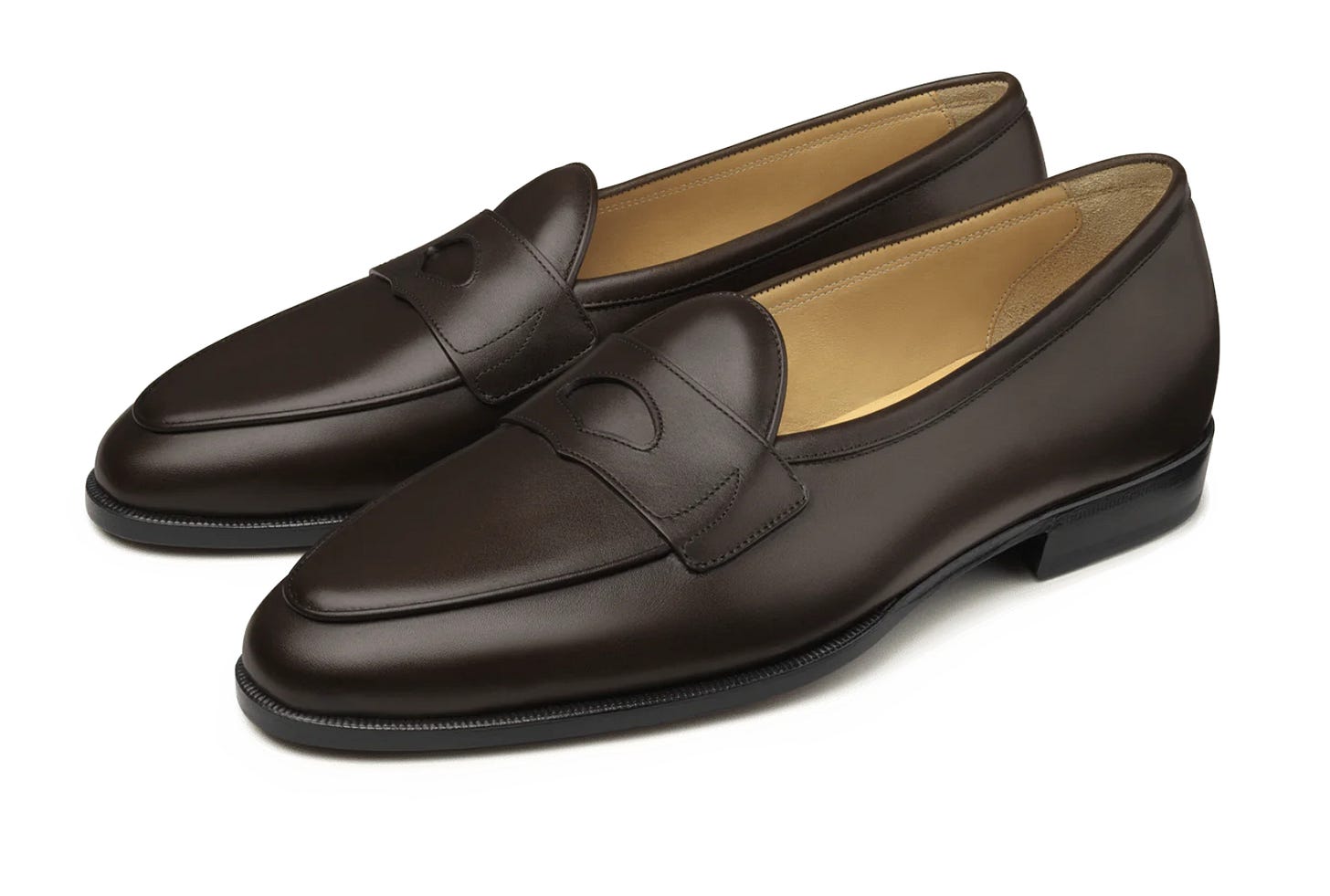
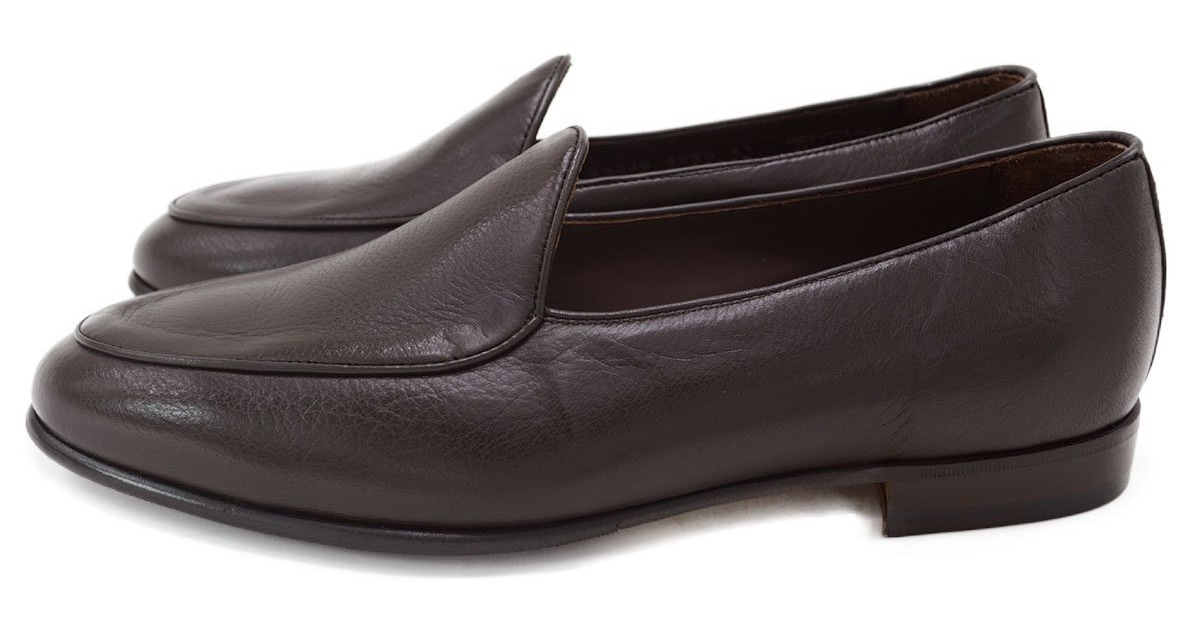
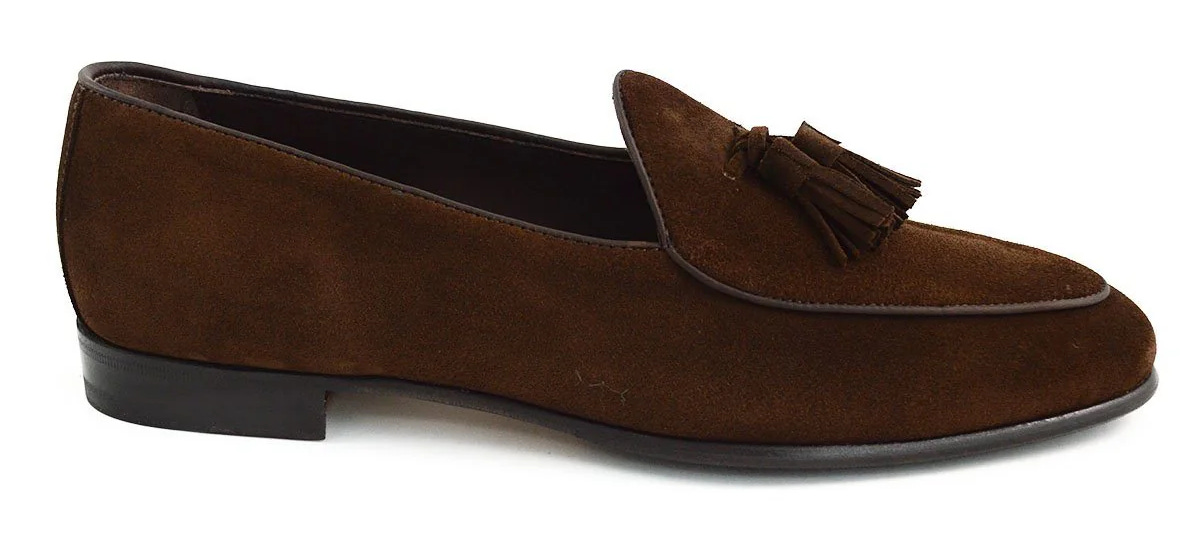

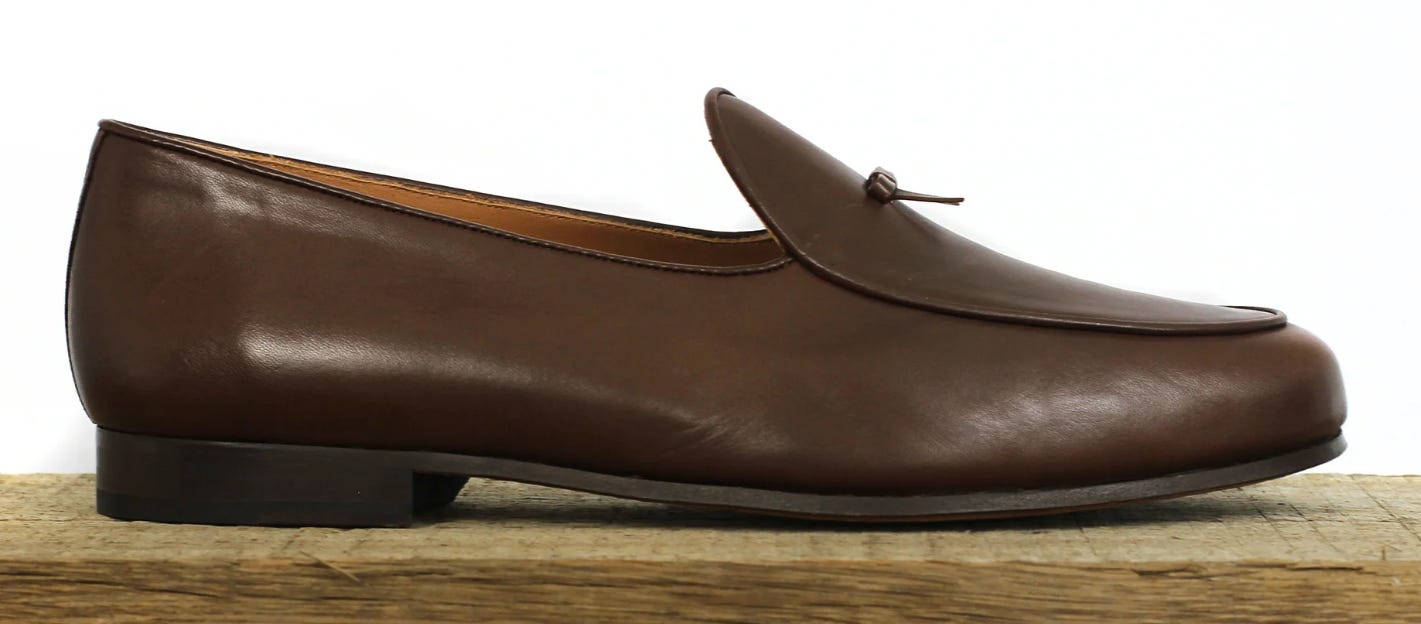
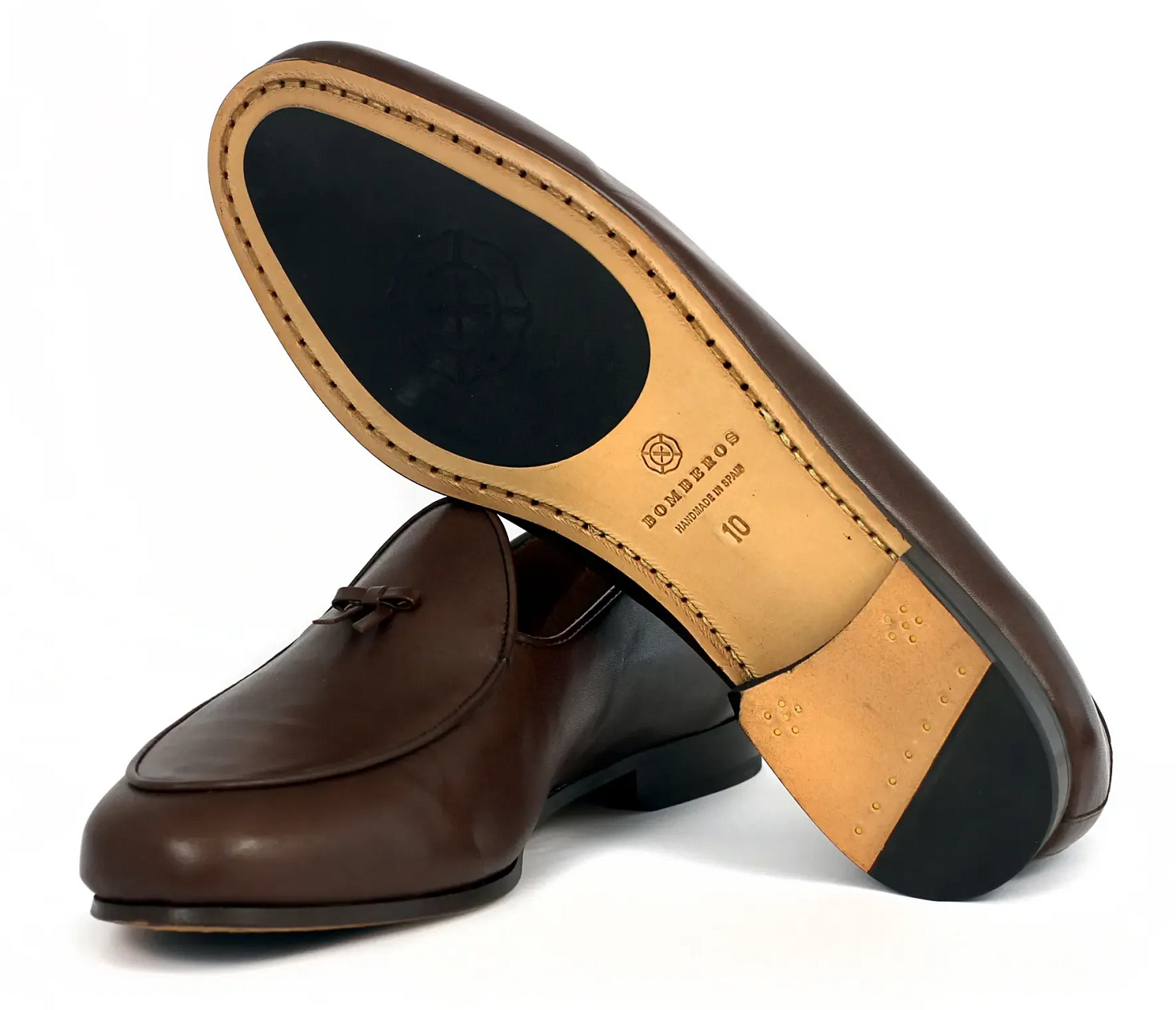

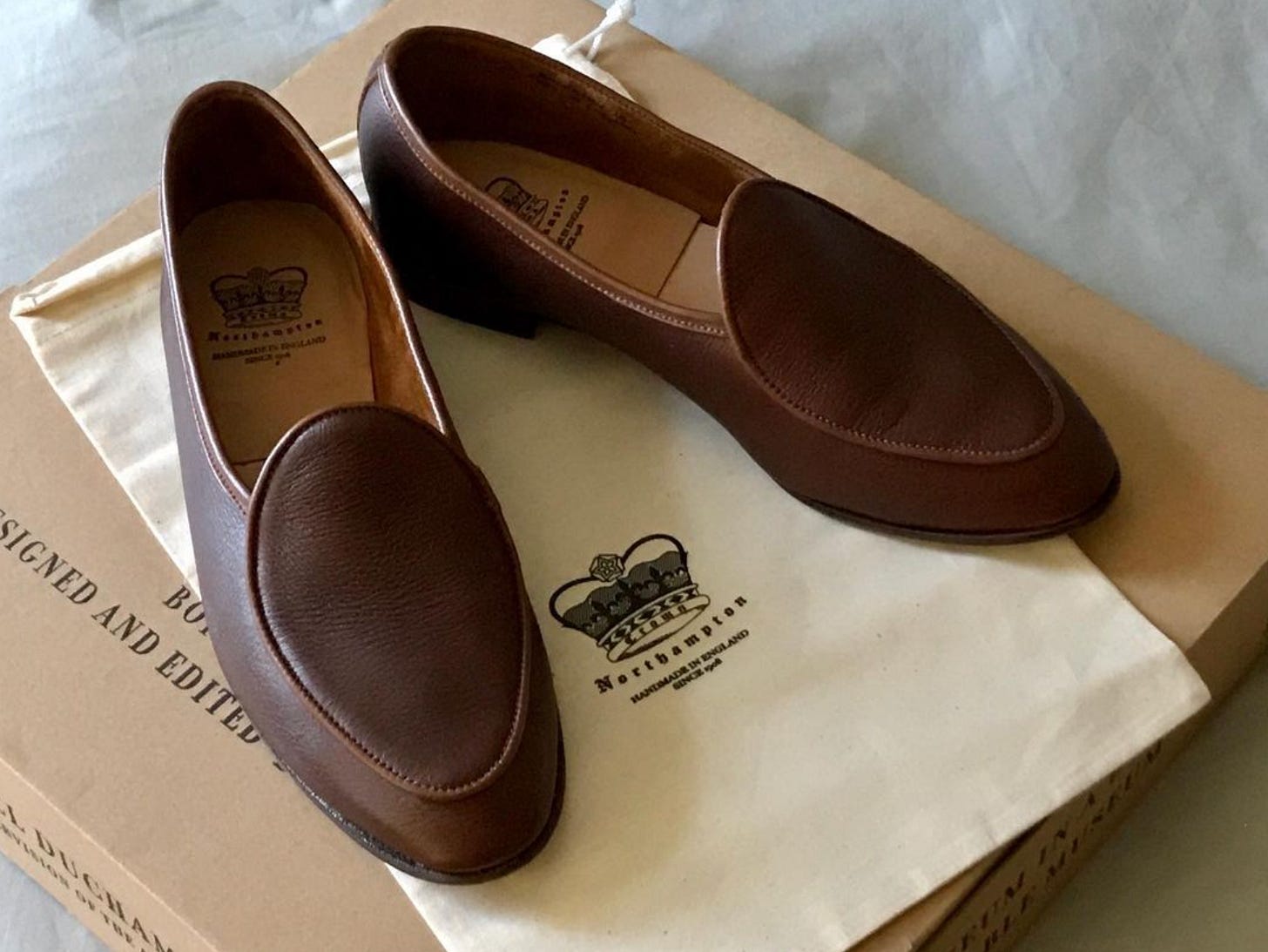



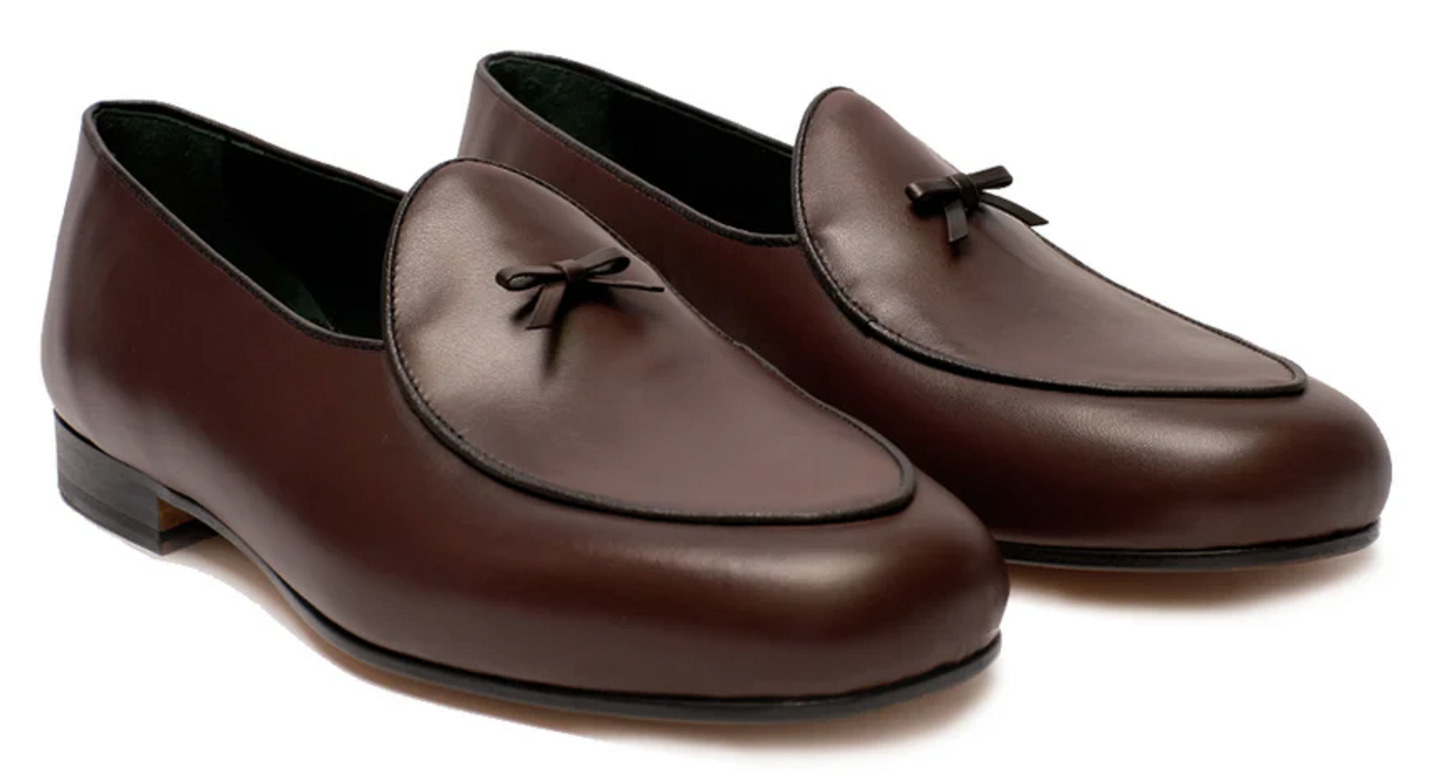






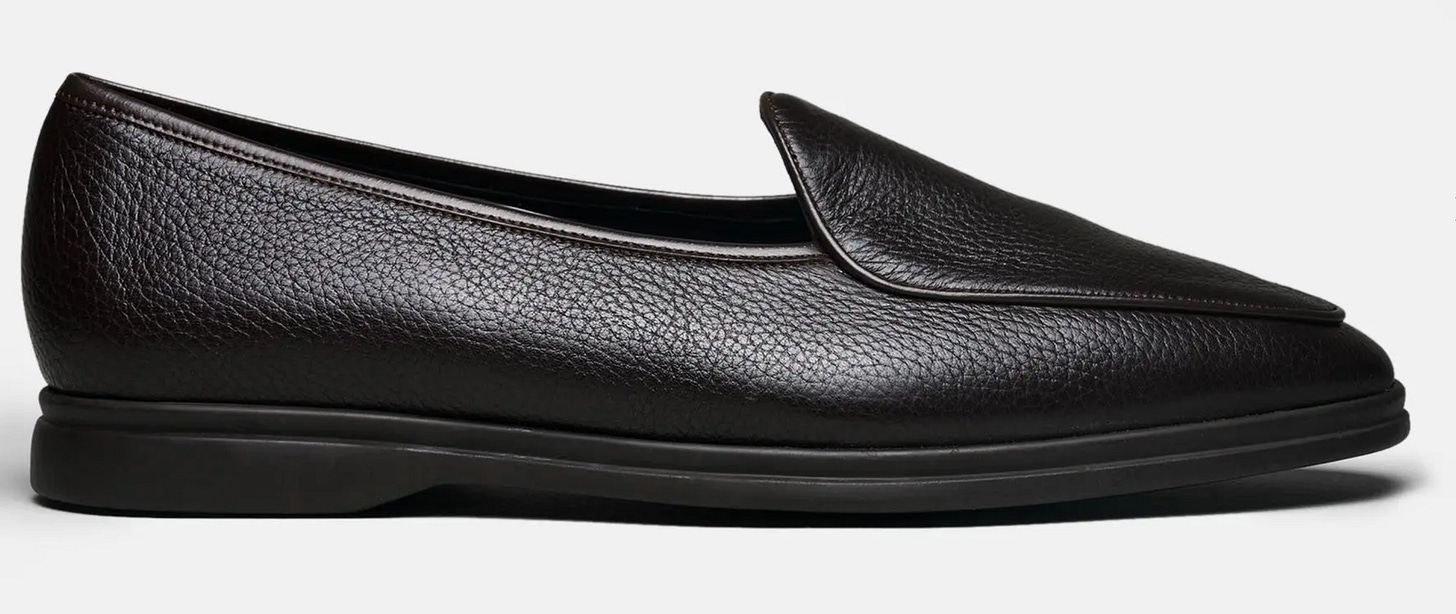
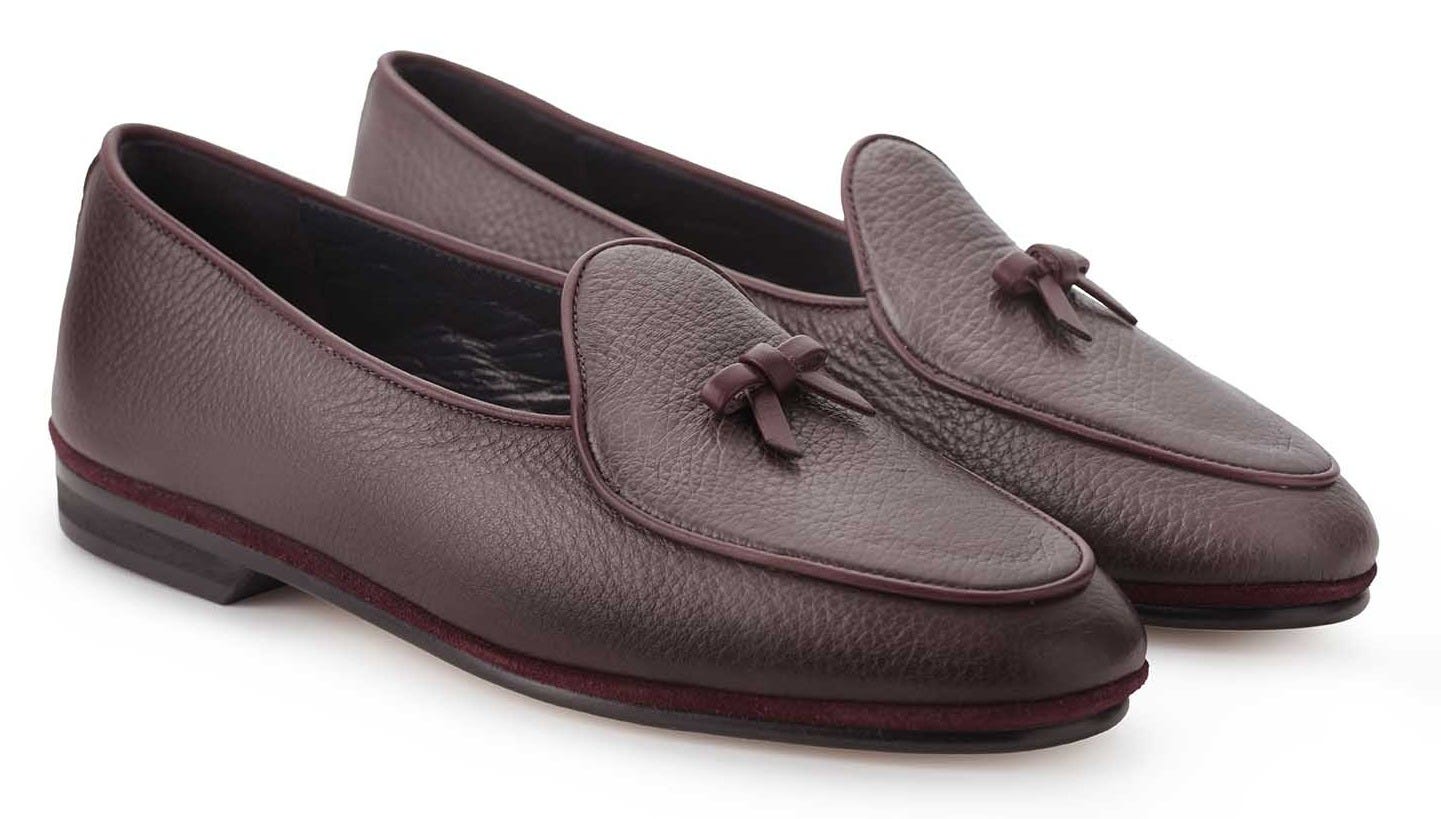


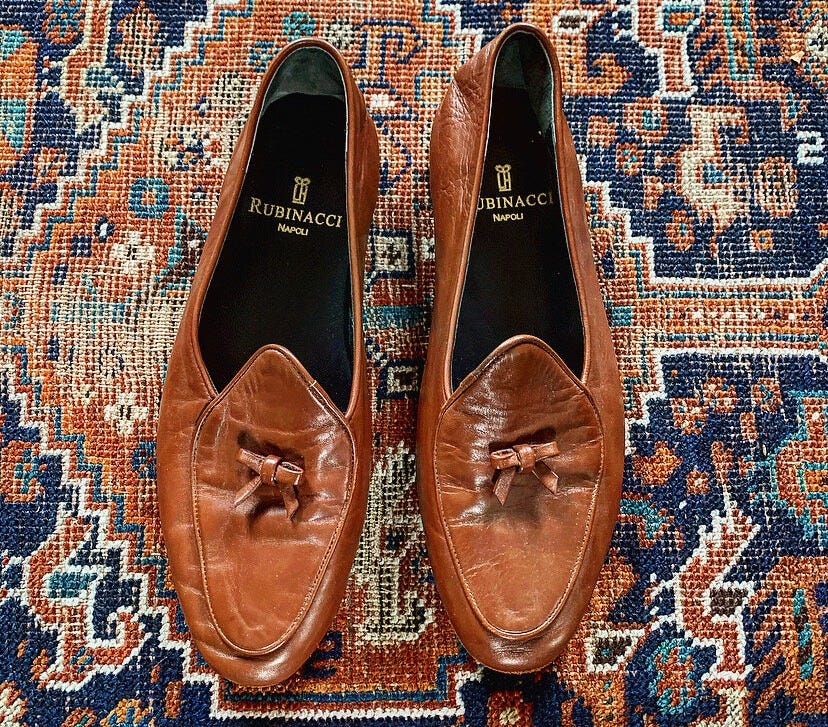

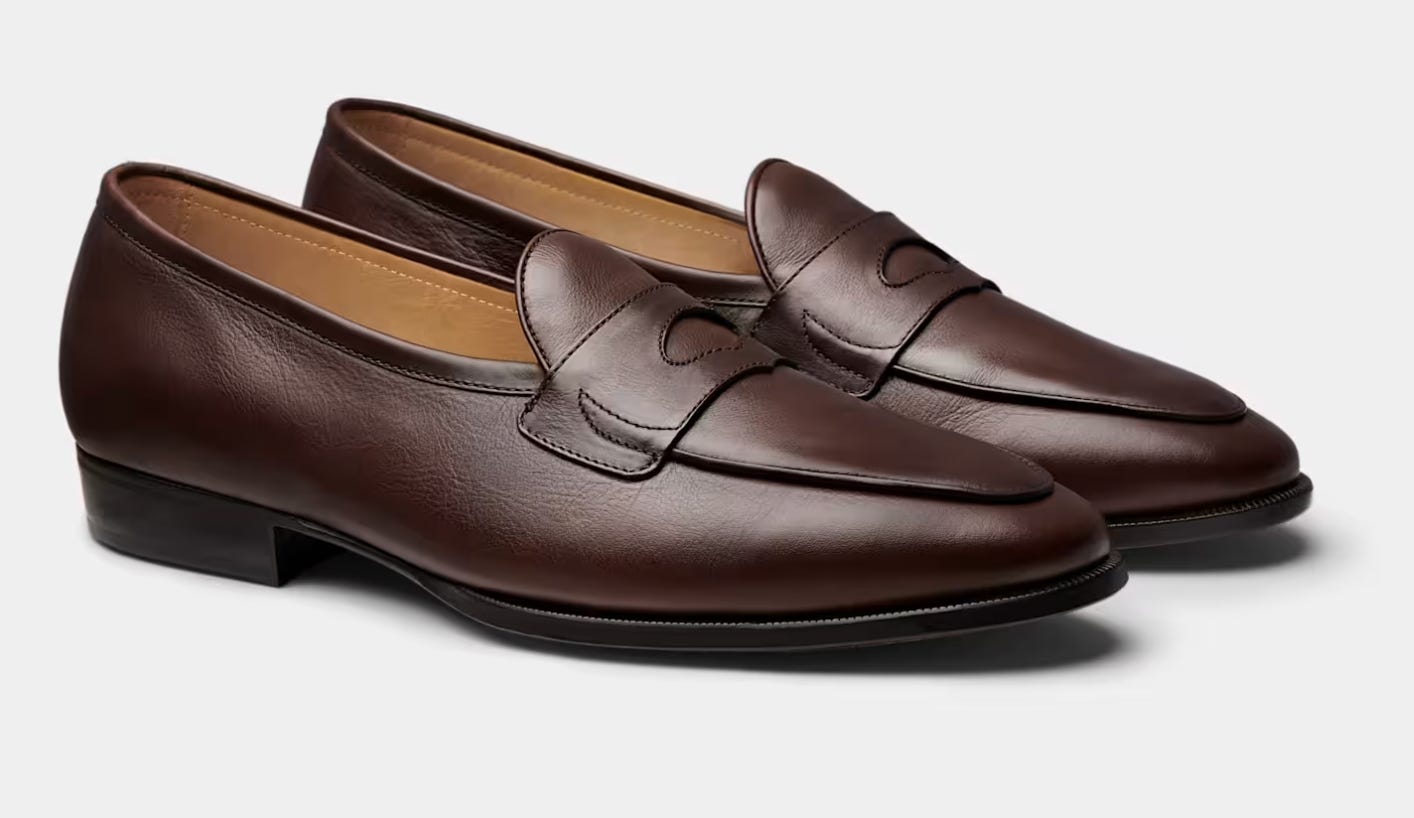

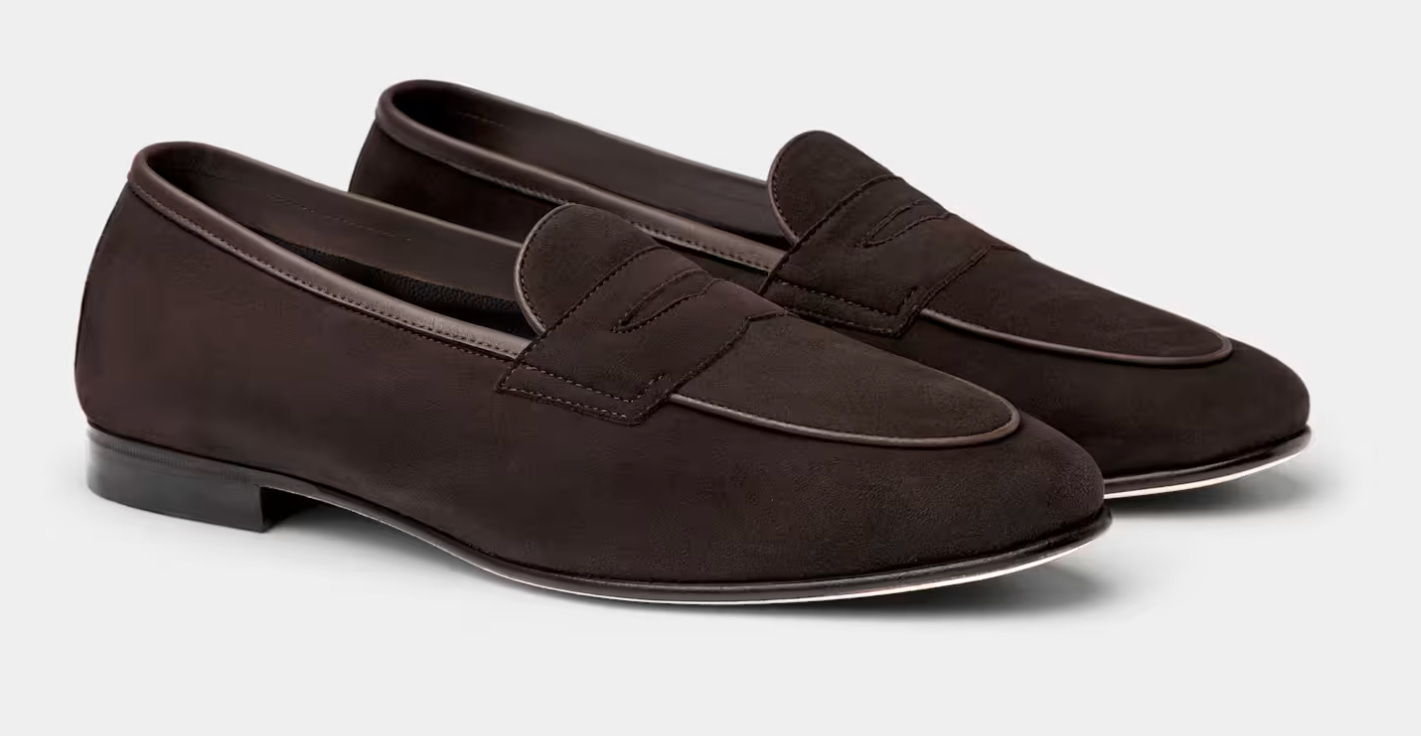
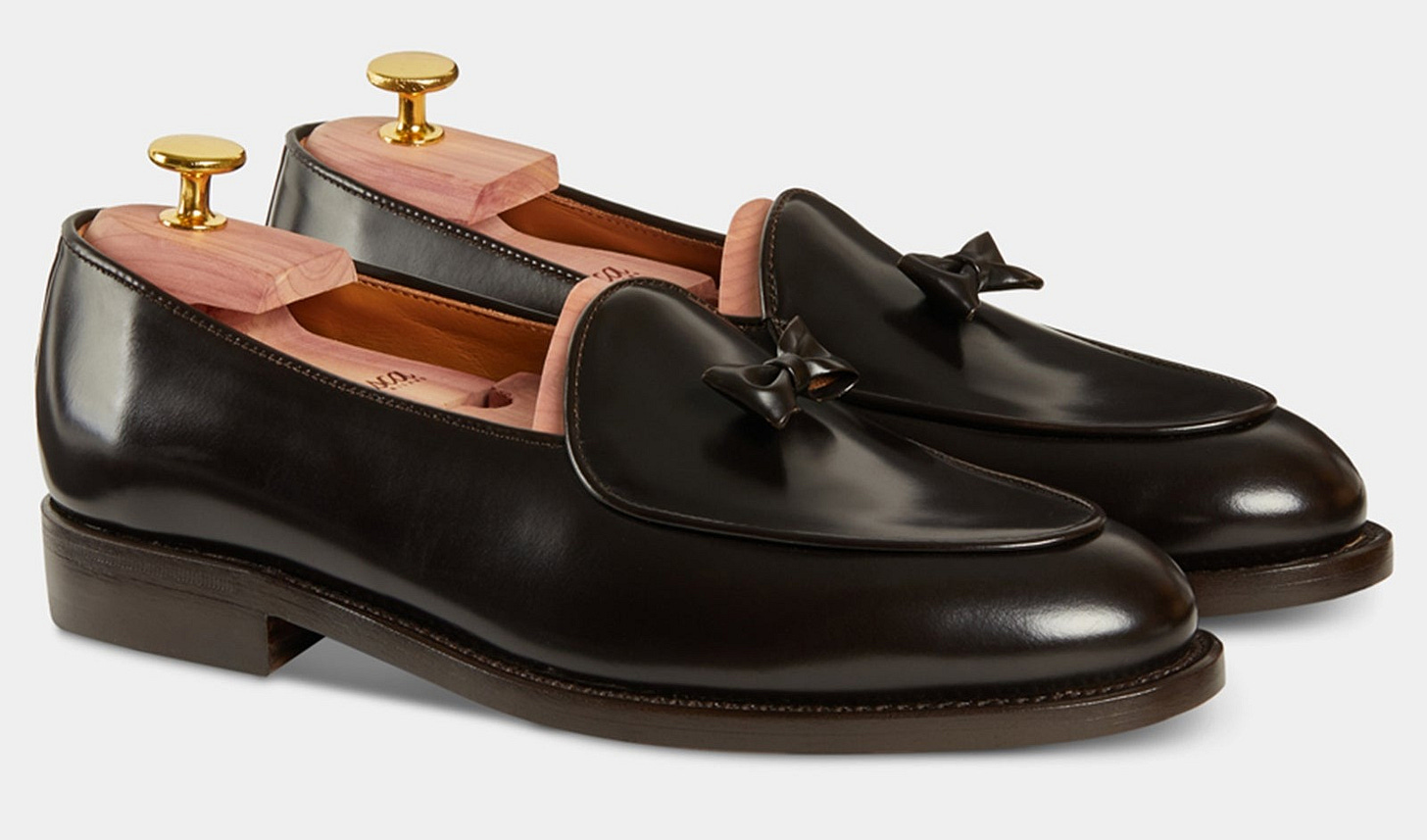



I have two pairs of Mr. Casual…one of which was a refresh in order to have a new pair for my wedding in 2023.
I special ordered black calf since it was out of stock in my size. Six months later I received the call that they were ready, albeit with a catch, “Mr. Albury, from the time that you’ve ordered, the price has risen to $550”
In retrospect, that’s still a deal just a year and change later!
I came realllllly close to getting Crown Northampton’s. The model they did in leopard print was so cool! For now, I ended up going with Sabahs. The more espadrille style shoe fits me a tad better. But I do love Belgian shoes, I think I’ll have to acquire a pair some day.